Halfway through a council meeting on the night of March 25, it became clear Ku-ring-gai’s elected representatives were not against Premier Chris Minns’ housing reforms purely to guard their own wicket. They were on a mission from God.
“I don’t want the state government’s plans implemented anywhere, not simply Ku-ring-gai,” said councillor Simon Lennon. “I don’t want them implemented in Newcastle, I don’t want them implemented on the Central Coast, I don’t want them implemented in Wollongong.
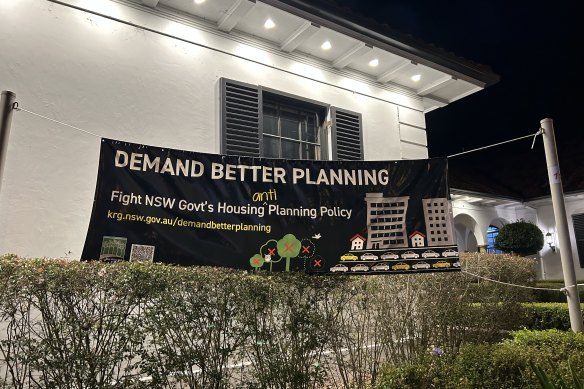
A banner outside Ku-ring-gai Council chambers in Gordon protesting against the NSW government’s housing and planning reforms.Credit: SMH
“We don’t live on islands, we’re not behind borders. We move ... This is not a matter of YIMBY or NIMBYism – because this is bad for the whole of NSW.”
For anyone even loosely familiar with Sydney planning and development history, Ku-ring-gai’s evangelistic crusade would not come as a surprise. Rightly or wrongly, the north shore is seen as hostile to new development and a stronghold of Not In My Backyard – or NIMBY – sentiment. Its response to the housing crisis will do little to change that.
The council has very publicly positioned itself as the bulwark against Minns’ housing agenda. Its main target is the transport-oriented development (TOD) program, which amends planning rules within 400 metres of certain train stations to allow apartment buildings up to six storeys. Of the scheme’s 37 stations, Ku-ring-gai has four: Roseville, Lindfield, Killara and Gordon.
In theory, landowners can now sell their properties to developers who will take advantage of the rezoning to replace old shops or freestanding homes with higher-density housing, usually units.
Several Sydney councils raised concerns about the program and successfully deferred its arrival in their suburbs by promising to deliver significant housing uplift in their own way. But Ku-ring-gai demanded more time to plan than the government would allow, and was refused.
Having failed to stop the scheme, the council is now suing the state government in the Land and Environment Court, claiming it overlooked the policy’s impact on critical habitat and endangered species such as the powerful owl. Ku-ring-gai Mayor Sam Ngai says of the lawsuit: “I’m not super keen about it, but we’ve got absolutely no choice.”
The council’s position is supported by an influential community group, Friends of Ku-ring-gai Environment, and its long-term president Kathy Cowley. But the politics behind this evergreen debate are more complex than first meets the eye.
For one, it is clear councillors are now divided on the best way to respond to the government’s interventions and the broader Sydney housing crisis. Some have started advocating for greater density in locations the council can control. Meanwhile, plenty of shrewd north shore property owners are keen to take advantage of the reforms their council is trying to kill.
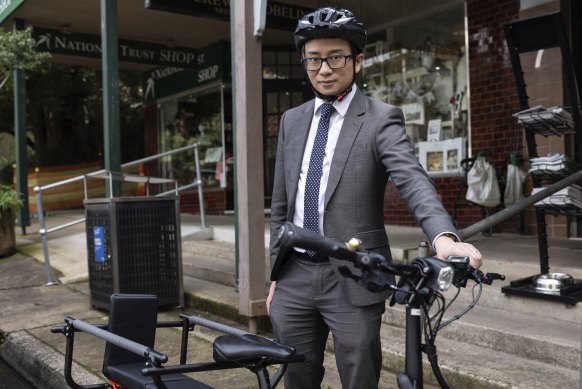
“I’m actually of the view that we can support a lot more housing in Ku-ring-gai,” says Ku-ring-gai Mayor Sam Ngai.Credit: Jessica Hromas
Playing politics
The local government area of Ku-ring-gai is the heart of Sydney’s proverbially leafy north shore. It takes in some of the city’s wealthiest suburbs, from Roseville in the south to Turramurra and St Ives further north. It is home to schools such as Pymble Ladies College, Knox Grammar and Ravenswood School for Girls. In Killara, the median house price has topped $3.5 million.
When it comes to meeting its housing targets, Ku-ring-gai’s recent record is mixed, and probably better than most people think. Over the five years to June 2021, it completed 3351 new homes, a little short of the 4000 target agreed by the council and the previous Coalition state government.
But in 2020, as the 2021-26 targets were being set, Ku-ring-gai Council revolted. It seized on a concession from then-Liberal planning minister Rob Stokes that housing targets were not really binding.
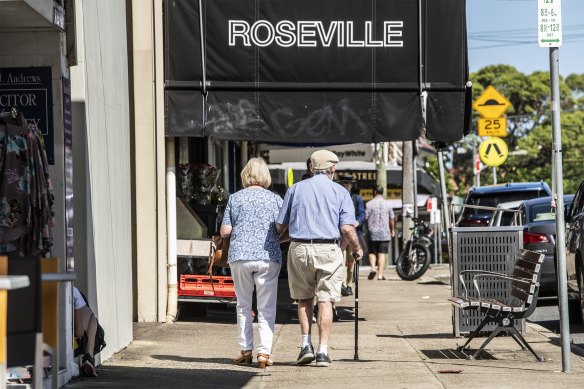
Roseville, one stop north of Chatswood, has been earmarked for more development within 400 metres of the train station.Credit: Steven Siewert
Then-mayor Jennifer Anderson said it was clear the community did not want any more development than what was permissible under current zoning. Stokes accused Ku-ring-gai of “throwing its toys out of the cot”, and threatened to intervene.
At any rate, very few new homes were built in Ku-ring-gai after that, just 245 in the two years to June 2023, from a 2021-26 target of 3000. Now Minns has handed the municipality a much bigger task: 7600 new homes by mid-2029. There’s a lot of catching up to do.
Ngai, who was 40 when he was elected last year, making him the youngest ever Ku-ring-gai mayor, says he’s not against that target. “I’m actually of the view that we can support a lot more housing in Ku-ring-gai,” he told a recent council meeting. “I’ve got three children and one day I hope that they can live close by. I need someone to look after me when I get old.”
Ngai tells the Herald his council is planning alternative scenarios to match or exceed the state government’s housing targets. “The housing capacity is there, and it’s really about whether the development and construction industry can ramp up.”
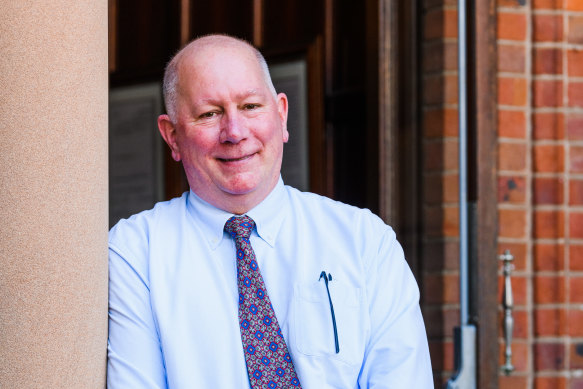
“Ku-ring-gai’s stance was uncompromising opposition,” says Roseville economist and YIMBY housing activist Peter Tulip.Credit: James Brickwood
But a stoush between council and state, or at least the appearance of one, is mutually beneficial. Councillors get to bash up the big, bad state government and grandstand in court ahead of local elections in September. Meanwhile, Labor, a non-entity on the north shore, gets a punching bag it can highlight as a cautionary tale.
In NSW, the Liberal Party does not endorse candidates for many councils, including Ku-ring-gai. Thus, several councillors, including Ngai, are members of the Liberal Party, but not elected as Liberals. The aforementioned Simon Lennon, who wanted to save the entire state from Minns’ planning reforms, has been president of the party’s Killara branch for 23 years.
Peter Tulip, chief economist at the Centre for Independent Studies think tank, and a Roseville resident for more than a decade, says the council’s position has been extremely disappointing. “Every other council negotiated with the state government. Instead, Ku-ring-gai’s stance was uncompromising opposition,” he says.
But Tulip, who is an ALP member and involved in housing advocacy group Sydney YIMBY, also recognises the political opportunism at play on both sides.
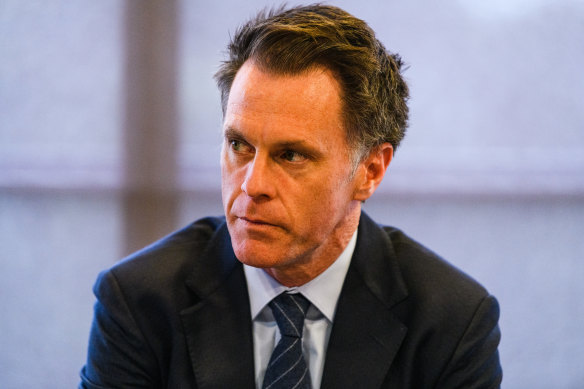
The housing reforms proposed by NSW Premier Chris Minns have been opposed by Ku-ring-gai Council.Credit: James Brickwood
“[The councillors] want to be seen as fighting for their community and taking the strongest stance against the proposals as they can,” Tulip says.
As for the Minns government, “Ku-ring-gai has conveniently provided them with an extreme position to fight against.”
Ku-ring-gai v The World
Development scepticism on the north shore is by no means new. In Ku-ring-gai, it’s their way or the (Pacific) highway. For proof, one need look no further than the long-running debacle of Turramurra town centre.
For 20 years, the council has entertained grand plans to revitalise the heart of Turramurra with a new library, community facilities and a village green. The existing Coles supermarket, which has wanted to renew and expand its ageing store, was never really part of that equation.
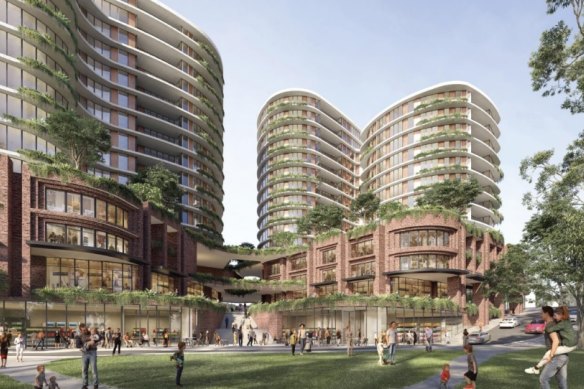
An artist’s impression of a proposed redevelopment in Turramurra, which Ku-ring-gai Council rejected in 2023.
When Coles put forward a redevelopment proposal in 2013, the council saw a threat to its vision, and commenced its own master plan, which it finalised in 2016. But it didn’t have $120 million to make it a reality.
Eventually, the council accepted Coles may have to be part of the solution. The council, and Coles, at council’s request, sought analysis as to how much residential development would be needed to finance the public utilities it wanted. It found the answers – 14 to 19 storeys – unpalatable.
“Neither council nor the community have an appetite for taller and denser buildings on the site,” a 2022 “project update” stated. Hence, despite discussions about undertaking the project in stages, it has stalled.
‘This YIMBY movement is now weaponising the world ‘NIMBY’ to … admonish individuals who advocate for the preservation of heritage.’
Friends of Ku-ring-gai Environment president Kathy Cowley
Today, the centre of Turramurra remains poorly lit and a temple to the motor vehicle, containing an above-ground council carpark, the library, the run-down Coles, a car wash and some old shops.
Across the road, another ageing shopping complex features an IGA, more stores and a parking lot. That site was the subject of a planning proposal by Turra Developments Pty Ltd in April 2022 that included redeveloping the commercial centre, paving a new road, creating a new public park and building 248 apartments in towers of 15 storeys.
Ku-ring-gai councillors wanted none of it, vetoing the proposal on the recommendation of staff without a word of debate. Elsewhere in Turramurra, a campaign backed by Wahroonga Liberal MP Alister Henskens defeated plans for an Aldi supermarket, although the upmarket Harris Farm now has approval for a project on that site.
The council also unsuccessfully fought Bunnings in the courts over its Pymble store for years. One ground on which it appealed was that the development would lead to the removal of a “tree of high significance”, a large Blue Gum. The store finally opened in 2022.
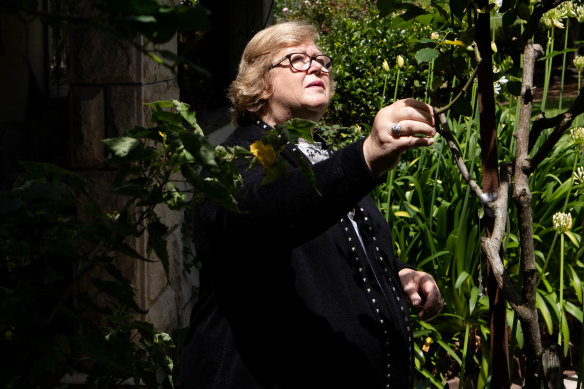
Kathy Cowley from Friends of Ku-ring-gai Environment says the area has to manage increased development with ecological and heritage challenges.Credit: Janie Barrett
NIMBY v YIMBY
Kathy Cowley has been involved in many, if not all, of those fights. In her decades of activism, she has been part of Save our Sydney Suburbs Inc, Friends of Lindfield, the Ku-ring-gai Preservation Trust, Rally Ku-ring-gai, Residents Against Inappropriate Development (RAID) and the “Not So High” Group. Today her main hat is president of Friends of Ku-ring-gai Environment.
In 2011, as part of “Friends of Turramurra”, she helped overturn an earlier state government plan for more housing on the north shore through a successful Land and Environment Court challenge.
While the NIMBY label has long been applied to places like Ku-ring-gai and people like Cowley, she believes it has been imbued with extra venom by the growing presence of YIMBYs, or people calling for higher density in their own neighbourhoods and across Sydney.
“This YIMBY movement is now weaponising the word NIMBY to denigrate, intimidate and admonish individuals and groups who appreciate and advocate for the preservation of heritage and environment of their neighbourhood, or those who simply value the qualities of where they have chosen to live and raise a family,” Cowley says by email.
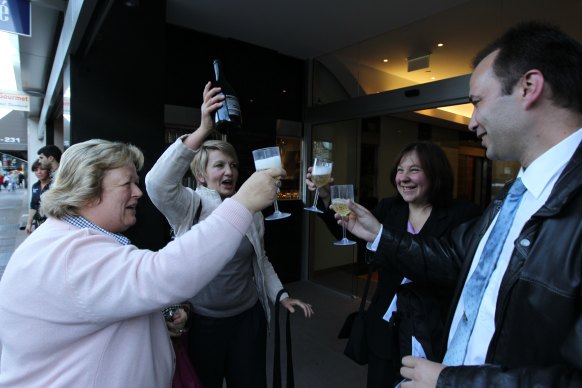
Kathy Cowley, left, was among the “Friends of Turramurra” group that won a case against the state government in 2011.Credit: Photographic
“The consequence of this disrespectful and misleading ‘YIMBY vs NIMBY’ binary is polarising debate. It is vexatious and resulting in personal threats, including one to myself, which I have reported to the NSW Police.”
Cowley says she supports rezoning based on strategic local government planning and community consultation, not by the state. She doubts the new housing targets are achievable, but in any case, she does not accept that increasing housing supply will improve affordability.
This confounds YIMBYs such as Tulip, the economist, who frequently point to the experiences of cities such as Auckland and Minneapolis, which have upzoned vast swaths of land and seen rents decrease (relative to inflation or other cities) as a result.
The NSW Productivity Commission and Minns cite Auckland as an example, too, and there is also a growing catalogue of academic literature supporting that finding.
Tulip says opponents misunderstand the affordability chain. They see new units being built and selling for high prices – especially on the north shore. “But the effect of the new supply is not the price of the new units, it’s the effect on all the other properties,” he says. “[It] reduces the price of everything else.”
Changing views
On Tuesday night, a proposal came before Ku-ring-gai Council which provides an insight into elected representatives’ current thinking on housing.
A developer wants to rezone a key site in central Lindfield, on the highway, near the train station and opposite a new Coles supermarket, to allow a 15-storey building. If it eventuated, it would be the tallest building in Ku-ring-gai.
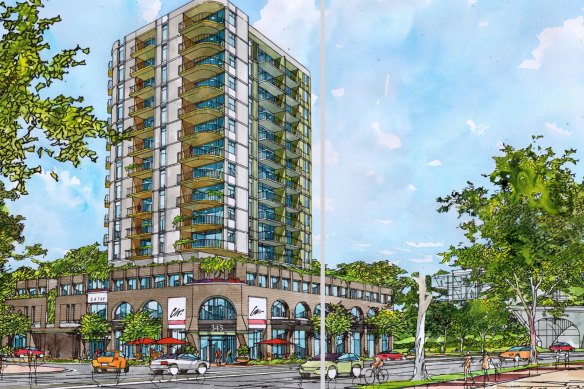
An artist’s impression of a potential development in Lindfield. At 15 storeys, it would be the tallest building in Ku-ring-gai.
Council staff recommended a reduction to 12 storeys, and floor space ratio of 3.5:1, which analysts advised was the minimum to make development feasible. That is still much higher than the six- to seven-storey developments envisaged by the government’s TOD program.
At a recent public forum, Tulip spoke in favour of the full 15 storeys. “Of course it’s tall. It has to be,” he told councillors. “There is no way of meeting the housing target without increasing density. The alternative is bulldozing more old buildings with big gardens, which the community doesn’t want.”
On Tuesday, councillor Simon Lennon moved to reject the proposal in its entirety, as did colleague Martin Smith. But Mayor Sam Ngai backed the staff recommendation, for the same reasons given by Tulip. He said four years ago, he would have agreed the proposal should be stopped.

Commuters at Lindfield station in the Ku-ring-gai LGA. Council is taking the state government to court over its plans to build more housing near transport hubs.Credit: Jessica Hromas
“Circumstances are different,” Ngai said. “If we’re unwilling to explore height even here, one of the three most sensible locations within Lindfield, then where else are we going to potentially deliver the heights required to save heritage conservation areas elsewhere?”
Ngai’s position of 12 storeys was initially supported five votes to two. But Lennon, having lost his bid to reject the proposal outright, made a counter-proposal: nine storeys.
“We really just want to shave off every floor we can,” he said. “Every floor that we can save here means the benchmark of the heights of buildings in Ku-ring-gai will be [lower]. I don’t think we should signal weakness. Nine storeys is still a lot, but gee willikers, it’s not as bad as 12.”
Nine storeys won the day, five votes to two, with Ngai losing the vote. Alec Taylor, who switched to support the nine-storey option, said: “We need to regain control of our planning, and to do that we need to signal to the government, NSW and our community that we are willing to compromise.”
Ultimately, though, the developer has sought a rezoning review from the state government, which will be assessed by an independent planning panel. It may end up as 15 storeys after all, but it will be a drawn-out process.
Cashing in
While councillors insist Ku-ring-gai voters are against the state government’s housing reforms, there are some on the north shore who disagree: the home owners who stand to make a killing.
Santhi King, 53, has lived in her Roseville home for 18 years, and calls it as the classic renovator’s dream. She and two neighbours are now looking at selling to a developer. Early offers have arrived, but any settlement would be long-term. If market conditions change, or the TODs get ripped up, or the council blocks the DA, any deal could fall through.
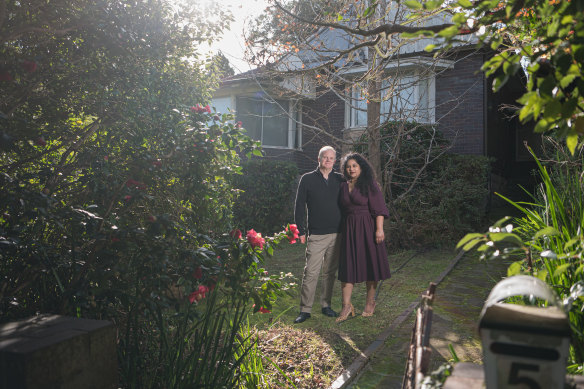
James and Santhi King.Credit: Flavio Brancaleone
Nonetheless, it’s the hot topic on the north shore. “Everyone’s talking about it,” King says. Stuart Cox, director of residential site sales at Savills, agrees “there has been a huge amount of interest”. That includes seniors’ living and aged care providers. “They’ve never had the opportunity to attain scale in this location,” Cox says.
Indeed, analysis commissioned by the Urban Development Institute of Australia found the north shore of Sydney was one of the few precincts where the government’s TOD program would likely bear fruit, mostly because buyers there were willing to pay a premium for a new apartment, and thus make the developments feasible in current market conditions.
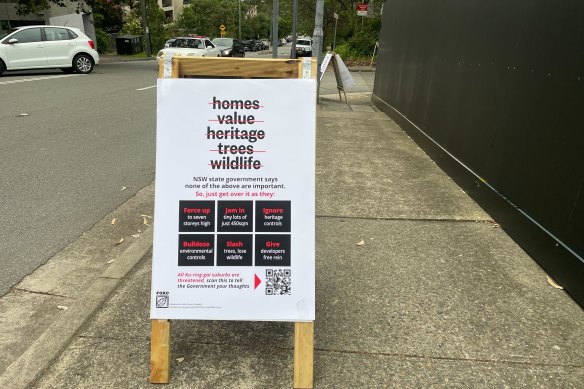
An advertisement for a Ku-ring-gai residents meeting to discuss the government’s plan earlier this year.Credit: Michael Koziol
But King, an accountant, has seen this show before. Her property has been zoned for high-density for ages, and she has had plenty of approaches from developers that have not panned out.
She is ambivalent about the Liberals’ attempts to block the government’s TOD reforms, or Ku-ring-gai Council’s activities in the Land and Environment Court.
“It’s something that’s completely out of our control,” King says. “The only thing you can do is make your decisions based on the information you have at hand today … And be careful about the life choices you make in the meantime.”
Start the day with a summary of the day’s most important and interesting stories, analysis and insights. Sign up for our Morning Edition newsletter.